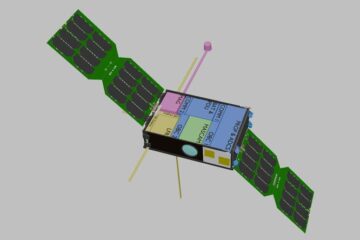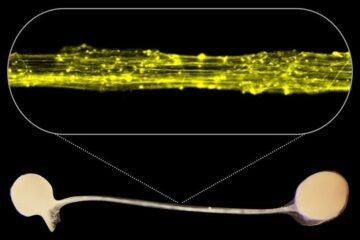Zebrafish Show Advantages in Assessing Human Cancer Cell-Induced Angiogenesis in vivo

Results were published online today in the advanced online issue of the journal, Angiogenesis. Melanoma, colorectal and pancreatic cell lines proliferated, migrated, formed masses and stimulated angiogenesis in zebrafish. Cells were injected into various sites in zebrafish, including the yolk sac, the brain, and the circulation.
Significant findings of this research include: human cancer cells were not rejected by zebrafish embryos, a major problem with other animal models; new zebrafish angiogenic vessels formed in and around human cancer cell masses, similar to the process of cancer progression in humans; and zebrafish cells incorporated into human cell masses, indicating that cell signaling mechanisms are highly conserved.
The research demonstrates numerous advantages of using zebrafish as an alternative model for cancer research, such as: zebrafish are small, inexpensive to maintain, easily bred in large numbers, require as few as 50 cells for transplant, permit in vivo visualization of cell migration, mass formation and interaction between human cancer and zebrafish cells in the transparent animal, and require small amount of drug per experiment, µM vs mM.
Since chemicals can be delivered directly in the fish water and proteins can be injected, assessment of cytotoxic, apoptotic or anti-angiogenic effects of potential drug candidates, singly or in combination, is straightforward.
“Our research demonstrates that zebrafish provide important advantages as a research model, which will be beneficial for advancing cancer research and drug screening,” said Patricia McGrath, Phylonix’ President and Chief Executive Officer. “Although the mouse has been the model of choice for human cancer cell research and drug screening for more than 25 years, the time required to perform xenotransplant studies in mice ranges from several weeks to months, and it has been difficult to generate mouse models that exhibit tumor metastasis,” she continued.
A striking result of this research was formation of new angiogenic vessels at sites surrounding tumor mass formation which was confirmed by whole mount immunostaining and histology; activated zebrafish endothelial cells were embedded in the cancer cell masses.
The research, conducted by Maryann Haldi, Christopher Ton, Wen Lin Seng and Patricia McGrath, was supported by a grant from the National Institute for Diabetes and Digestive and Kidney Disease (DK074179).
For more information about this research or to request copies of the article and related images, please contact Phylonix at 617-444-6700, or visit www.phylonix.com.
About Phylonix
Phylonix, based in Cambridge, Massachusetts, is a privately owned biopharmaceutical research and services company that develops and markets zebrafish-based assays, eZ-Screens, used to assess safety and efficacy of drug candidates. The company owns several issued United States patents on critical research tools, including methods for drug screening in zebrafish using microtiter plates (6,299,858), transplantation of human cells in zebrafish (6,761,876), and methods for assessing drug candidates for angiogenesis and vasculargenesis in zebrafish (7,041,276). Phylonix’ drug candidate screening technologies and services are used by dozens of biotechnology and pharmaceutical customers world-wide.
Media Contact
More Information:
http://www.phylonix.comAll latest news from the category: Life Sciences and Chemistry
Articles and reports from the Life Sciences and chemistry area deal with applied and basic research into modern biology, chemistry and human medicine.
Valuable information can be found on a range of life sciences fields including bacteriology, biochemistry, bionics, bioinformatics, biophysics, biotechnology, genetics, geobotany, human biology, marine biology, microbiology, molecular biology, cellular biology, zoology, bioinorganic chemistry, microchemistry and environmental chemistry.
Newest articles

Caution, hot surface!
An international research team from the University of Jena and the Helmholtz Institute Jena are demystifying the mechanisms by which high-intensity laser pulses produce plasma on the surface of solids….

Exploring the Asteroid Apophis With Small Satellites
In five years’ time, a large asteroid will fly very close to Earth – a unique opportunity to study it. Concepts for a national German small satellite mission are being…

First model of the brain’s information highways developed
Our human brain is not only bigger and contains more neurons than the brains of other species, but it is also connected in a special pattern: Thick bundles of neurons…





















